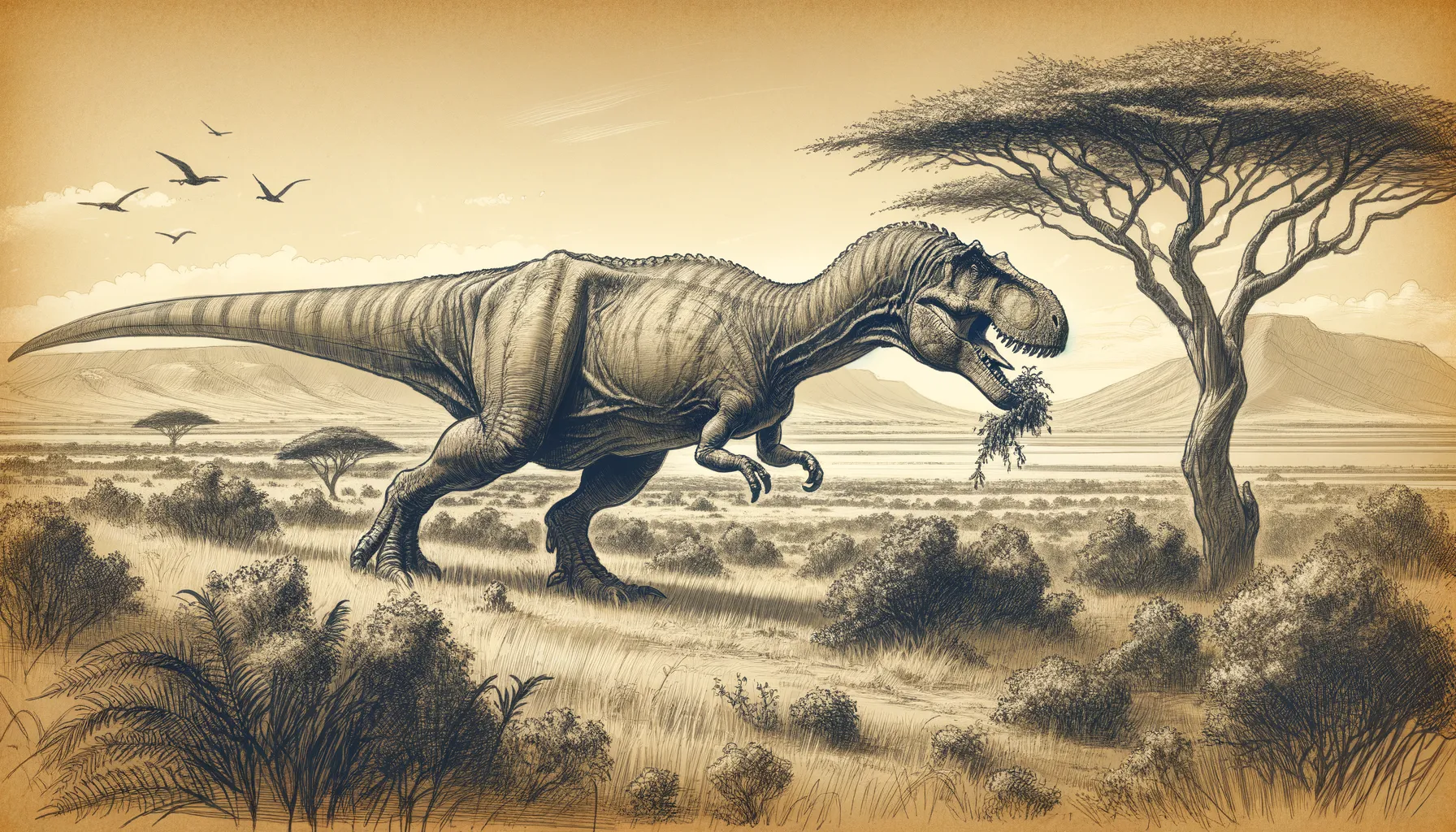
Ngexisaurus
Sworn steward of ancient plains and meadows.
Period
Jurassic
Length
Around 6 meters in length.
Height
About 3 meters tall.
Weight
Approximately 500 kilograms.
Ngexisaurus roamed the vast plains of ancient southern Africa, a medium-sized dinosaur known for its robust build and steady gait. This herbivorous dinosaur had a long, flexible neck and was well-adapted to munching on low-lying vegetation. Its fossils provide key insights into the diversity of life during the Jurassic period, marking it as an important species for understanding prehistoric ecosystems.
Diet
Ngexisaurus primarily fed on ferns and other low-lying plants, using its long neck to reach diverse vegetation. Its teeth were well-suited to grinding tough plant materials, indicating a strictly herbivorous diet.
Hunting
Unlike carnivorous dinosaurs, Ngexisaurus did not hunt for food. Instead, it foraged peacefully for plant matter, moving in herds to graze expansive areas for sustenance.
Environmental challenges
Ngexisaurus faced a range of environmental challenges, including periodic droughts which could limit food availability. As a creature of the fertile Jurassic landscapes, it had to contend with volcanic activity, which occasionally altered its habitat. Additionally, competition for resources with other herbivores would have pushed it to adapt browsing techniques.
Speed
Moderate, adapted for steady roaming.
Lifespan
Likely 70-80 years, based on similar species.
First discovery
Found in South Africa in 2023 by a joint research team.
Fun Facts
- Ngexisaurus is a relatively new discovery, unearthed in the rich fossil beds of China.
- This dinosaur lived during the Middle Jurassic period, making it around 165 million years old.
- Ngexisaurus was a small theropod, likely standing less than 3 feet tall.
- Its name is a combination of the location where it was found, Ngexi, and the Greek word for lizard, 'saurus'.
- Scientists believe Ngexisaurus was a carnivore, hunting small animals and insects.
- The discovery of Ngexisaurus helps fill a gap in our knowledge about the evolution of small theropods.
- Fossils like those of Ngexisaurus showcase the diversity of dinosaur life in what is now modern-day Asia.
Growth and Development
Ngexisaurus displayed gradual growth, typical of large herbivorous dinosaurs, with extended juvenile phases. Young Ngexisaurus likely stayed close to their elders for protection as they developed. Over time, they grew into their significant size, reaching maturity over a period of decades.
Habitat
This dinosaur inhabited lush, fertile floodplains abundant with vegetation. The climate during its time was warm and humid, fostering dense plant life which supported Ngexisaurus and similar species. Seasonal variations would have affected food supplies, necessitating migration within its territorial range.
Interaction with other species
Ngexisaurus likely coexisted with other herbivores, often sharing grazing grounds with them. It maintained a non-aggressive stance towards contemporaneous carnivores, relying on its herd for safety. Predators might have targeted younger or weaker individuals, influencing group behavior.
Natural lifespan
Ngexisaurus individuals typically lived up to 80 years under natural conditions.
Reproduction
Ngexisaurus likely reproduced by laying eggs in nests built on the ground. Parental care may have involved guarding the eggs until they hatched, after which young Ngexisaurus stayed close to their parents in the early stages of life.
Social behaviour
Ngexisaurus was likely a social creature, moving in herds to ensure safety from predators. Herding allowed for efficient communication and coordination in finding food and water resources. Social structures within the herd were probably based on age and experience, with older individuals guiding the group.
Fossil locations
Fossils of Ngexisaurus have been discovered primarily in the Karoo Basin of South Africa. The region is a rich site for Jurassic era fossils, providing significant insights into the life forms of that period. These findings help reconstruct the environment and ecological conditions of ancient southern Africa.
